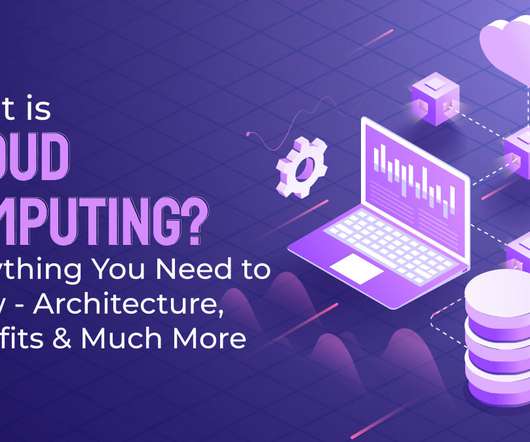What is Cloud Computing? Everything You Need to Know – Architecture, Benefits & Much More
Openxcell
JANUARY 6, 2023
You can rent these resources to create an IT infrastructure because they are hosted in one of the public cloud vendors’ internationally dispersed and well-managed data centres. Google Cloud Platform (GCP), Amazon Web Services (AWS), and Microsoft Azure are the top suppliers of this kind of cloud service, although there are others.















Let's personalize your content